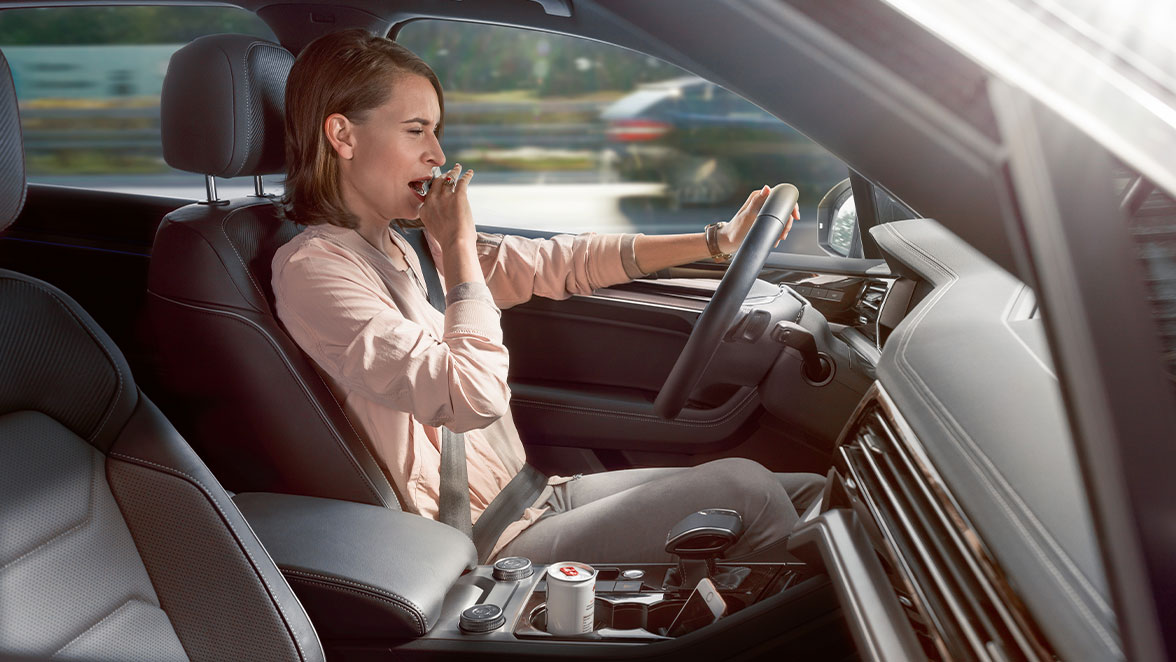Eye-tracking tech has been making its way into cars for years as a safety feature, especially with the rise of driver assistance software. Now, Bosch thinks the tech could offer some other benefits – and it’s showing off two ideas this week at CES 2024 in Las Vegas. The first scenario is pretty straightforward (and […]
© 2023 TechCrunch. All rights reserved. For personal use only.
Eye-tracking tech has been making its way into cars for years as a safety feature, especially with the rise of driver assistance software. Now, Bosch thinks the tech could offer some other benefits – and it’s showing off two ideas this week at CES 2024 in Las Vegas.
The first scenario is pretty straightforward (and very European): You’re driving home and the car recognizes that you’re looking pretty drowsy. The car asks, “would you like an espresso when you arrive?” You say yes, and when you walk in the door, your shiny Bosch (or other brand) connected automatic espresso machine has one ready to be enjoyed.
The other is far more complicated: Eye-tracking tech could be used during your drive to figure out what points of interest you’re looking at, and the car could offer contextual information. It might then prompt you with the hours of operation of a nearby restaurant, or tell you the history of a castle on the horizon (again, so European).
They’re the perfect kind of partially-baked CES ideas, in that they make a sort of intuitive sense at the surface level, but can start to break apart under scrutiny. Presumably, if someone is driving home and drowsy, it’s most likely nighttime, which may not be the best time to suck down a shot of espresso. Quickly triangulating what specific store or landmark a person is looking at while driving down a highway based on their flittering gaze sounds… tricky.
Sometimes advanced tech gets introduced into cars for important-if-mundane reasons, and winds up sparking other possibilities. But it’s all about how it eventually gets used.
Since Bosch is merely a supplier here, it’s up to the automakers to decide if – and more importantly, how – it wants to implement these ideas. Bosch’s suggestions are a starting point, and it’s easy to see how big automakers might take this tech in different directions. For instance, if an eye-tracking point-of-interest system really does get built, won’t it be tempting for the automakers to try to sell advertising using that information – especially as they continue to develop hands-off and even eyes-off driver assistance software?
Stefan Buerkle, the president of cross-domain computing solutions at Bosch USA, noted in an interview that “pushing advertisements into the car is the opposite of reducing driver distraction,” though he doesn’t rule it out. Ultimately, it sounds like he thinks the tradeoffs could be worth it if the system really does work as intended, since there’s a chance it could help mitigate phone usage in the car.
“Today, people expect, especially if it comes to information, an immediate answer,” he says. “If I’m in a car and I want to have that information, and I don’t get it from the car, what I do is I grab my phone.”
That’s certainly true, and it’s a theme we’ll likely hear a lot at this week’s show.

Leave a Reply